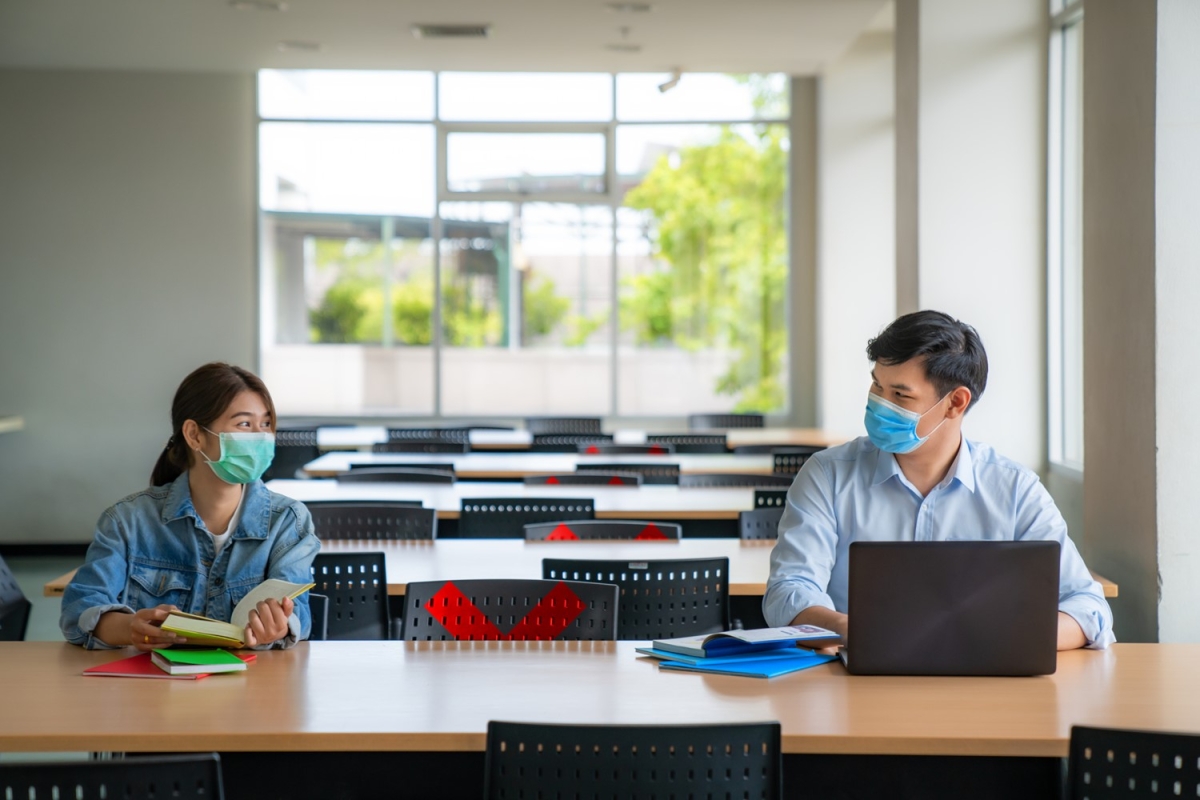Study challenges attitudes about young people and pandemic preventative measures, plus other stories

Top marks: Quebec university students score high with COVID-19 compliance
A new study led by McGill researchers found that compliance with public health measures was high among university level students in Quebec during a critical period of the pandemic in 2021. They found 78% per cent of students observed in the study followed the proper mask-wearing and two-metre physical distancing rules, close to the 80 per cent threshold suggested as necessary to reduce the spread of COVID-19. A total of 2,109 observations were performed in a Quebec university library from March 28 to April 25, 2021.
Prior to this study, compliance with COVID-19 preventive measures had not been studied via direct observation in Quebec, say the researchers.
“We believe that these results are of great value for the general public, as they provide the first scientific feedback on the behaviour of a specific population toward COVID-19 preventive measures during a critical period of the pandemic,” said Yohann Pilon, Medicinæ Doctorem et Chirurgiæ Magistrum (MDCM) candidate at McGill University’s Faculty of Medine and lead author on the study. His work suggests that in the event of a future COVID-19 wave, university libraries can remain open with preventive measures in place.
"It may also support public health authorities and university administrators in implementing future health policies that would lead to the safe maintenance of as many in-person activities as possible if faced with another surge in COVID-19 cases,” said Pilon.
“Compliance with COVID-19 preventive measures is high among university-level students in Québec, Canada” by Yohann Pilon et al. was published in the Canada Communicable Disease Report.

Worldwide Aerosol Optical Depth (AOD), 2017, Terra Satellite. Darker colours indicate higher levels of AOD. Missing data are marked in white.
Testing the impact of subways on air pollution
Air pollution is a major threat to human health and the climate. According to the World Health Organization, about seven million people die prematurely each year because of exposure to harmful pollution levels. Cities around the world are under pressure to implement policies that improve urban air quality. Many turn to the construction of mass rapid transit systems in the hope of reducing the use of cars and motorcycles and the pollution they cause. But do subways improve urban air quality? A team of researchers led by McGill University Professor Nicolas Gendron-Carrier set out to answer this question by tracking changes in airborne particulates in cities across the globe with NASA’s satellites. They studied all of the 58 subway openings and 143 expansions that occurred anywhere in the world between August 2001 and July 2016.
Data shows that, on average, a new subway system resulted only in a small improvement in air quality. This average effect, however, conceals an important finding: subway openings significantly improve air quality in highly polluted cities, preventing the equivalent of 500 deaths per year in a city.
“For cities with higher initial pollution levels, subway openings reduce pollution particulates by 4 percent on average in the area surrounding a city centre. These improvements are not short- lived either. They persisted for at least four years after the opening of a subway,” says Professor Gendron-Carrier.
The researchers found that the improvements in air quality were greatest near the city centres, where subway service is usually concentrated. They also found that subway ridership was linked to reductions in pollution particulates. That is, cities where particulates fell the most had the largest subway ridership and consequently automobile substitution.
“Deliberations about subway placement tend to favour places where it’s easier to build a subway and not necessarily where demand for travel is highest – for example, in the densest areas of a city – usually because it’s more complicated to build there. But building where the demand and take up is high makes sense,” says Professor Gendron-Carrier.
“So, is building a subway worth the cost? A back-of-the-envelope estimate suggests that reduced mortality from lower air pollution can offset a substantial share of the construction costs of subways,” says Professor Gendron-Carrier. For highly polluted cities, the researchers estimate that subway openings bring in savings worth over $1 billion per year in prevented deaths. “This estimate does not include the effects of particulate reduction on morbidity or on productivity, and so probably understate the benefits.”
“Subways and Urban Air Pollution” by Nicolas Gendron-Carrier et al. was published in the American Economic Journal: Applied Economics.
About McGill University
Founded in Montreal, Quebec, in 1821, McGill University is Canada’s top ranked medical doctoral university. McGill is consistently ranked as one of the top universities, both nationally and internationally. It is a world-renowned institution of higher learning with research activities spanning three campuses, 11 faculties, 13 professional schools, 300 programs of study and over 39,000 students, including more than 10,400 graduate students. McGill attracts students from over 150 countries around the world, its 12,000 international students making up 30% of the student body. Over half of McGill students claim a first language other than English, including approximately 20% of our students who say French is their mother tongue.

